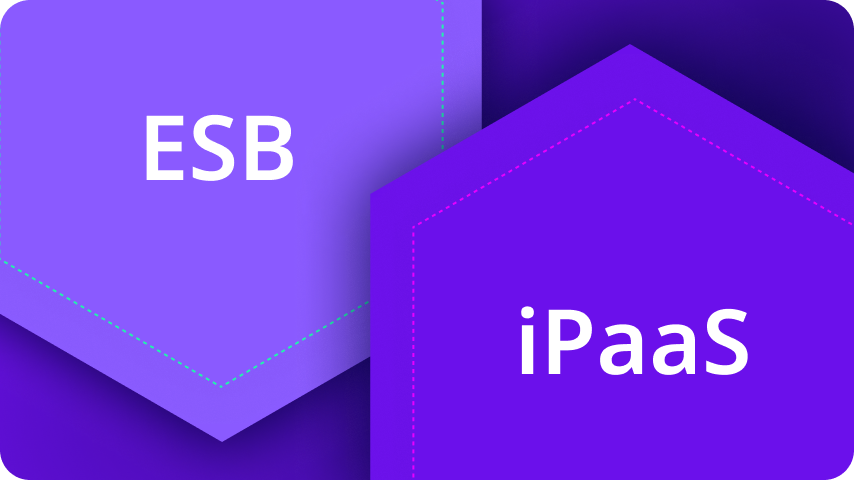
Entrevista com o executivo Bob Howland fornecendo insights sobre liderança e gestão de mudanças em seus mais de 20 anos no espaço de comércio eletrônico.

Entrevista com o executivo Bob Howland fornecendo insights sobre liderança e gestão de mudanças em seus mais de 20 anos no espaço de comércio eletrônico.

Você é um varejista que está lutando para encontrar a melhor solução para a integração de TI? Você precisa de algo ágil o suficiente para escalar durante os períodos de pico e retrair durante os ciclos mais lentos – um sistema funcional que integre a arquitetura legada local com aplicativos baseados em nuvem.
Mais importante ainda, você precisa de uma infraestrutura de TI que ofereça a melhor experiência omni-channel (CX) para o cliente, enquanto gerencia grandes volumes de big data em várias localidades. Essa é uma tarefa difícil. Não é à toa que isso te mantém acordado à noite. Sua decisão terá efeitos duradouros na sua empresa. O movimento errado pode impactar severamente o seu resultado financeiro.
Está na hora de aliviar a pressão. Hoje em dia, as soluções de integração de TI são flexíveis o suficiente para facilitar para você e toda a sua equipe de TI. As soluções de plataforma de integração como serviço para empresas (iPaaS) permitem que os varejistas integrem todos os tipos de infraestrutura de TI, seja soluções locais, aplicativos baseados em nuvem ou sistemas híbridos.
As limitações anteriores das soluções legadas ponto a ponto (P2P) e os modelos de integração de barramento de serviço empresarial (ESB) não precisam mais limitar a sua arquitetura de TI.
>> Agende uma demonstração personalizada com nossa equipe de especialistas e veja como o iPaaS da Digibee trará eficiência para o seu negócio.
Você pode estar trabalhando com soluções legadas P2P que conectam apenas dois aplicativos diretamente, então você está lidando com o chamado ‘código espaguete’, com sistemas complexos e entrelaçados que não têm uma maneira central de se comunicarem entre si.
Talvez você tenha um sistema mais recente, se é que podemos chamar de recente, dos anos 1990, quando os ESBs apareceram como a nova ferramenta de integração. Claro, os ESBs oferecem mais funcionalidades que os modelos P2P, porque a estrutura de hub parecida com um barramento de um ESB permite conexões com vários aplicativos. No entanto, a tecnologia evoluiu muito desde os anos 90. Os ESBs foram originalmente desenvolvidos antes de existirem aplicativos baseados em nuvem e geralmente são limitados à arquitetura local, pois não funcionam bem com sistemas baseados em nuvem ou híbridos.
Os ESBs também são caros e demoram muito para serem estabelecidos, pois especialistas de TI muitas vezes precisam de treinamento ou certificação especializada para desenvolver e manter sistemas de integração ESB.
Por fim, as capacidades limitadas dos métodos P2P e ESB reduzem o acesso e o uso dos dados grandes, ou consultas ad-hoc baseadas nesses dados, que são fundamentais para os varejistas que querem proporcionar uma experiência omni-channel de alto nível (CX) para o cliente.
Uma plataforma de integração como serviço (iPaaS) empresarial é mais ágil do que os modelos tradicionais de integração P2P ou ESB. Uma solução iPaaS tem a capacidade de conectar sistemas locais, baseados em nuvem e híbridos, proporcionando muito mais flexibilidade, funcionalidade e escalabilidade do que os modelos P2P ou ESB.
Uma solução iPaaS também é intuitiva, então, em vez de precisar de especialistas de TI escrevendo código profissional (pro-code) para modelos P2P ou ESB, todos os níveis de pessoal de TI podem gerenciar uma plataforma iPaaS de baixo código com muito pouco treinamento necessário. Você pode fazer uma comparação direta entre pro-code e low-code para descobrir a melhor solução para sua estratégia de integração.
Um modelo de iPaaS baseado em assinatura é mais barato, mais flexível e muito mais escalável do que os métodos legados P2P ou ESB. Além disso, a implementação é significativamente mais rápida com um iPaaS baseado em nuvem em comparação com outros métodos de integração, ajudando os varejistas a ganharem tempo mais rápido para gerar valor com as integrações de TI.
Digibee oferece uma experiência de integração de TI rápida e simplificada. O iPaaS fácil de usar da Digibee é uma plataforma de integração nativa em nuvem, pronta para empresas, que acelera o tempo de valor, mitiga riscos e ajuda a reduzir os custos de TI. Descubra como a eficiência e agilidade do iPaaS da Digibee trouxe resultados imediatos para varejistas internacionais.
A Digibee integrou com sucesso mais de 14 sistemas legados para o maior fabricante de produtos de panificação do Brasil. Bauducco Foods possui cinco unidades de fabricação, 12 filiais e sete centros de distribuição. Sua divisão de varejo, Casa Bauducco, tem mais de 80 lojas, com mais de 180.000 pontos de venda no Brasil.
A implementação de integração do iPaaS da Digibee conectou e otimizou instantaneamente os sistemas locais e baseados em nuvem existentes da Bauducco, eliminou entradas manuais e erros de dados, gerenciou e reduziu riscos, e proporcionou maior estabilidade em todo o ambiente de TI. A Digibee fez tudo isso sem tempo de inatividade e uma redução de 30% no tempo e custo do projeto.
A Digibee também integrou uma plataforma segura de iPaaS de e-commerce para o varejista global de calçados Payless Shoes em mais de 200 lojas em 15 países. A implementação levou menos de 30 dias, apesar de cada país ter requisitos fiscais e legais diferentes. O sistema iPaaS lida facilmente com os picos sazonais para o varejista movimentado, oferecendo maior eficiência, transparência e segurança em todo o ambiente de varejo.
O iPaaS baseado em assinatura da Digibee conectará todos os seus sistemas legados P2P e ESB, bem como qualquer aplicativo baseado em nuvem. Ele também otimiza sua operação, apoiando uma CX omni-channel, desbloqueando capacidades de big data, aliviando a pressão sobre sua equipe de TI, reduzindo os custos de integração e melhorando seu retorno sobre o investimento (ROI). O que você está esperando?
Descubra a diferença Digibee. Aprenda como integrar e modernizar sua empresa com a plataforma de integração como serviço (iPaaS) da Digibee. Agende sua escolha de uma ligação de descoberta (15 minutos), demonstração personalizada (30 minutos) ou uma imersão profunda (60 minutos) para saber mais.

O comércio composable é um conceito que ganhou grande popularidade nos últimos anos e está prestes a ser um dos principais diferenciais de negócios no próximo ano para os varejistas. Embora o conceito de composabilidade ressoe fundamentalmente com profissionais de TI, o diabo está nos detalhes (como sempre).
Como você define composabilidade quando aplicada especificamente ao e-commerce e à tecnologia de varejo? Como você define os benefícios do comércio composable – e os riscos de não seguir para a composabilidade?
E mais importante, o que você pode realmente fazer hoje para começar a transformação de um sistema monolítico para composable?
>> Agende uma demonstração personalizada com nossa equipe de especialistas e veja como o iPaaS da Digibee pode trazer mais eficiência para o seu negócio.
Em contraste com as plataformas tradicionais monolíticas de comércio, que empacotam todas as partes de uma solução de comércio digital em uma grande rede de computação, o comércio composable funciona com muitos microserviços, cada um lidando com uma função distinta do sistema.
Normalmente, ele incorpora o comércio headless, que separa a camada de apresentação do front-end da funcionalidade de e-commerce do back-end, e então subdivide ainda mais o back-end em microserviços separados, cada um realizando uma tarefa distinta, como gestão de estoque ou um gateway de pagamento.
Isso é o “o quê”, agora o “por quê”: dividir um sistema nesses microserviços separados dá às empresas a liberdade de selecionar os melhores componentes individuais para suas necessidades específicas de negócios, e a flexibilidade de modificá-los ou trocá-los facilmente no futuro, sem precisar refazer o restante do sistema.
Isso nunca foi tão crítico como é hoje. Nenhuma indústria resistiu tanto aos desafios da mudança quanto o varejo nos últimos anos. E todos sabemos que mudanças rápidas agora são constantes. As organizações de varejo que estão “vencendo” são aquelas que podem se adaptar rapidamente, assim como as que estão mais avançadas no caminho da Transformação Digital.
Vamos aprofundar o papel que a composabilidade pode desempenhar em 2023.
Para ser bem-sucedido, não só cada microserviço individual precisa ser bem planejado, mas também a forma como ele se comunica com cada outro microserviço dentro do sistema.
Sem uma integração inteligente de e-commerce, essa comunicação entre componentes precisa ser gerenciada em um nível incrivelmente detalhado, expondo uma empresa a várias complicações sérias das seguintes maneiras:
No comércio composable, uma jornada típica de cliente vai tocar em muitos microserviços diferentes, muitas vezes até atravessando diferentes canais online. Sem integração, a jornada do seu cliente pode se tornar desarticulada, causando frustração e decepção para eles, e oportunidades perdidas para você.
Por exemplo, se os seus componentes de CRM e marketing por e-mail não estão alinhados, os prospects podem receber um e-mail alertando-os sobre uma promoção que não é válida para sua região. Se a gestão de inventário não estiver atualizando sua plataforma de e-commerce em tempo real, eles poderiam comprar um item que está fora de estoque e o pedido precisará ser cancelado.
Um sistema composable tem muitos pequenos processos ocorrendo ao mesmo tempo, e sem uma forte integração, uma empresa pode rapidamente se encontrar em uma situação de dados onde “não consegue ver a floresta por causa das árvores”. Isso deixa a empresa em uma grande desvantagem ao tentar tomar decisões de negócios que forneçam valor real ao cliente.
Essencialmente, essa é a versão voltada para os negócios da “experiência do cliente não tão fluida”, onde a empresa tem uma visão limitada da jornada geral do cliente e pode apenas ver essas interações no nível de componentes.
A capacidade de montar (e remontar) rapidamente os melhores componentes para suas necessidades de negócios é uma das razões principais para escolher uma arquitetura de comércio composable. À medida que você adiciona ou remove tecnologias para competir onde seus clientes estão, velocidade e flexibilidade são essenciais. Isso também é verdade para parceiros. À medida que você se integra com fornecedores, marketplaces e outras plataformas e softwares para avançar sua estratégia digital, seus processos de integração precisam estar em ordem.
Essa adaptabilidade necessária é facilmente erodida sem integração de dados de e-commerce. Gerenciar uma rede de integrações personalizadas, construídas sobre tecnologias legadas, é demorado, complicado e propenso a erros imprevistos.
A plataforma que você escolher para integração precisa evitar os cenários mencionados acima, abordando simultaneamente o volume de microserviços distintos a serem gerenciados e mantendo a flexibilidade e adaptabilidade essenciais para a abordagem do comércio composable.
Procure por uma plataforma de integração que seja:
A filosofia central da arquitetura composable é algo que a Digibee realmente adotou. Nosso iPaaS modular é projetado para aumentar a liberdade e a adaptabilidade, apoiando um sistema de comércio composable, ou até mesmo para apoiar sua transição para um.
Se você está interessado em saber como a Digibee pode ajudar sua organização a evoluir para um ambiente de TI modular, ficaríamos felizes em mostrar como. Agende sua escolha de uma ligação de descoberta de 15 minutos, demonstração personalizada de 30 minutos ou um mergulho profundo de 60 minutos para saber mais.

Líderes de negócios e TI enfrentam decisões de TI complexas – e muitas vezes caras – que têm efeitos significativos e duradouros em suas empresas. O cenário de TI está em constante mudança, por isso pode ser difícil saber o que é melhor para o presente e para o futuro. A decisão errada pode impactar severamente os resultados de uma empresa e causar dores de cabeça contínuas que poderiam ser totalmente evitadas.
Este artigo compara os modelos de Enterprise Service Bus (ESB) com as soluções de integração como serviço (iPaaS) para as necessidades de integração atuais. Para uma comparação justa, primeiro, você deve entender a diferença entre ESB e iPaaS.
>> Agende uma demonstração personalizada com nossa equipe de especialistas e veja como o iPaaS da Digibee trará mais eficiência para o seu negócio.

Existem muitas palavras da moda sendo usadas nas reuniões de negócios e, especialmente quando o assunto é tecnologia, pode ser difícil a) acompanhar e b) entender corretamente. Então, se você está se sentindo um pouco inseguro por ter que pesquisar o que esses termos realmente significam, saiba que o problema não é você.
Qualquer termo tecnológico é relativamente novo e seu significado naturalmente vai mudar ou ser refinado ao longo do tempo. Tanto as práticas de pesquisa de termos quanto perguntar de forma independente para a pessoa com quem você está trabalhando sobre como ela usa esses termos são essenciais para uma comunicação eficaz entre os lados de negócios e tecnologia de qualquer empresa.
Neste post, vamos explorar alguns termos comuns relacionados à infraestrutura do comércio digital:
>> Agende uma demonstração personalizada com nossa equipe de especialistas e veja como o iPaaS da Digibee trará mais eficiência para o seu negócio.
Uma arquitetura monolítica tradicional basicamente agrupa todas as partes de uma aplicação em uma grande rede de computação. No mundo atual, centrado na nuvem e com plataformas como serviço, essa ideia soa um pouco arcaica. Em sua defesa, a arquitetura monolítica não é um relicário totalmente antigo; ela ainda oferece uma solução fácil que continua funcionando para muitas empresas, e há muitas opções “prontas para uso” disponíveis.
“Monolítico” vem da palavra grega antiga μονόλιθος (monólithos), de μόνος (mónos), que significa “um” ou “único”, e λίθος (líthos), que significa “pedra”. Embora estejamos confiantes de que até a pessoa de TI mais resistente a mudanças não está rodando o seu site em nada feito de pedra, é uma ótima forma de visualizar os conceitos que sustentam a arquitetura monolítica na tecnologia.
A principal dificuldade que surge para quem tem um sistema monolítico é a adaptabilidade. Fazer uma mudança em um sistema monolítico é tão impossível quanto tentar tirar algo do fundo de uma mala grande enquanto mantém as roupas dobradas. Atualizar ou até mesmo manter um sistema monolítico pode colocar pressão sobre o pessoal, que tem que cavar constantemente no código legada para manter o sistema funcionando.
A arquitetura de comércio sem cabeça (headless) é construída de forma que a lógica do back-end ou do lado do servidor foi desacoplada da interface de usuário do front-end. Neste tipo de arquitetura, o sistema de back-end se conecta à interface de usuário por meio de APIs, geralmente APIs RESTful que expõem os dados de forma padronizada, permitindo que sejam consumidos por uma variedade de diferentes clientes e usados para uma variedade de casos de uso de negócios. A arquitetura monolítica também usa APIs, mas, por contraste, elas são construídas para serem fortemente acopladas ao back-end daquele sistema e são projetadas para executar casos de uso de negócios muito específicos.
Quais são as vantagens das arquiteturas sem cabeça? Ao construir uma interface de front-end com uma arquitetura headless, os desenvolvedores conseguem manter um nível mais alto de liberdade para criar experiências de usuário personalizadas, sem se preocupar com as complexidades do back-end. Sistemas de back-end headless também podem ser usados simultaneamente por múltiplos aplicativos clientes, de forma que um site, um aplicativo móvel, um quiosque e um chatbot podem compartilhar o mesmo sistema subjacente sem causar problemas entre eles. No final, isso promete mais flexibilidade à medida que o cenário da tecnologia de varejo continua a evoluir e garante uma melhor visibilidade e conectividade das fontes de dados à medida que os varejistas tentam implementar uma experiência omnicanal para os clientes e potenciais clientes.
A arquitetura de comércio componível enfatiza o uso de componentes intercambiáveis e independentes – ou microserviços. Esses serviços podem incluir tudo, desde o gerenciamento de inventário e pesquisa de produtos, até carrinhos de compras e fornecedores de pagamentos. Ao dividir uma solução nesses serviços discretos e independentes, uma empresa pode facilmente trocar ou reformular um serviço sem grandes riscos para o sistema como um todo.
Essa modularidade oferece uma flexibilidade enorme para a empresa e permite que ela se adapte mais rapidamente do que seus concorrentes monolíticos às novas tecnologias à medida que se tornam disponíveis. Como no comércio headless, esses módulos geralmente são conectados por APIs RESTful, que expõem dados de um microserviço para outro.
“Em tempos turbulentos, os princípios de negócios componíveis ajudam as organizações a dominar a mudança acelerada que é essencial para a resiliência e crescimento dos negócios. Sem isso, as organizações modernas correm o risco de perder o ritmo de mercado e a lealdade dos clientes.”
David Groombridge, Vice-presidente de Pesquisa, Gartner
Esse alto nível de flexibilidade traz algumas considerações adicionais para a equipe. Ao contrário das opções “prontas para uso” da arquitetura monolítica, um site de comércio componível é sob medida e exige que os desenvolvedores construam. Gerenciar vários microserviços e APIs também pode ser desafiador, e uma abordagem abrangente para como conectá-los e monitorá-los precisa ser implementada, além de ser mantida atualizada com cada mudança no sistema.
Não existe realmente um “vs” entre comércio componível e comércio headless, pois ambos têm uma sobreposição substancial, já que ambos dependem de APIs RESTful para conectar diferentes partes de seus respectivos sistemas.
Se o comércio headless é componível depende essencialmente de como suas APIs e serviços são projetados de forma modular e reutilizável. Se um site foi construído com o back-end e front-end desacoplados, mas as APIs foram projetadas para funcionar especificamente apenas para o back-end daquele sistema, então pode ser considerado headless, mas não componível.
A resposta curta é não, porque tecnicamente não há exigência de que uma arquitetura componível tenha até mesmo uma interface de front-end, mas a resposta mais longa é que muitas vezes elas são, já que um front-end headless pode fornecer a modularidade necessária para suportar o comércio componível.
As conversas sobre inovação para a maioria das empresas de comércio digital hoje precisam abranger sua abordagem à arquitetura de tecnologia como um todo, mas também ser capazes de entender como cada parte desse sistema se encaixaria para atender às necessidades do negócio.
Com tantos dados importantes sendo gerados, qualquer abordagem para a arquitetura do seu sistema precisa ser capaz de capturar esses dados de maneira que agregue valor ao seu negócio. É aqui que a integração de e-commerce entra.
A Digibee foi criada para apoiar totalmente muitas abordagens de arquitetura técnica. Seja você um usuário de um sistema de comércio totalmente componível ou alguém que está começando a jornada de migração de um comércio monolítico, podemos ajudar. Nossa plataforma eiPaaS de baixo código escala rapidamente e facilmente para integrar todos os seus serviços independentes graças às nossas cápsulas reutilizáveis Digibee, proporcionando total flexibilidade para aproveitar os dados do seu sistema.
Se você está interessado em como a Digibee pode ajudar sua organização a evoluir para um ambiente de TI modular, ficaremos felizes em mostrar como. Agende sua escolha de uma call de descoberta de 15 minutos, uma demonstração personalizada de 30 minutos ou um aprofundamento de 60 minutos para saber mais.

entrevista com o executivo de comércio eletrônico Chris Muscut, fornecendo informações valiosas sobre tendências de varejo e o cenário de tecnologia em constante mudança.

Insights de líderes e executivos da tecnologia corporativa sobre o papel crítico do sistema e da integração de dados para empresas que competem em um mundo digital primeiro.

Um Barramento de Serviços Empresariais, também conhecido como ESB, é um tipo de arquitetura de TI que permite que múltiplos aplicativos se comuniquem por meio de uma infraestrutura centralizada, semelhante a um barramento. O que é um Barramento de Serviços Empresariais e o que o ESB significa para a sua integração de TI?
Uma integração ESB basicamente estabelece princípios e regras que orientam as capacidades de comunicação de diferentes aplicativos.
>> Agende uma demonstração personalizada com nossa equipe de especialistas e veja como o iPaaS da Digibee trará mais eficiência para o seu negócio.

Oferecer uma experiência excepcional e personalizada ao cliente (CX) exige mais do que um site impressionante e um chatbot inteligente (por mais envolventes que possam ser). A realidade é que a experiência do cliente é contínua e nunca termina.
Sim, o maior obstáculo é converter uma visita inicial ao site ou à loja em uma venda, mas o CX não termina aí. Na verdade, ele está apenas começando.

A migração para a nuvem não é um conceito novo de forma alguma. Os serviços baseados na nuvem se tornaram tão onipresentes que os utilizamos várias vezes ao dia sem pensar duas vezes. Mas, apesar da natureza universal da computação em nuvem, o que está mudando é a sua importância no mundo dos negócios.
Não é mais uma “vantagem a ser desejada”; adotar a nuvem se tornou vital para o crescimento, sucesso e capacidade de competir das empresas, à medida que os nativos digitais – empresas que nunca existiram em outro lugar além da nuvem – surgem e aproveitam novas tecnologias e modelos de negócios para quebrar o status quo.
Embora a maioria das organizações já use tecnologias de nuvem de alguma forma, ainda é crucial pesar os benefícios da migração para a nuvem contra os riscos e desafios que ela representa para suas operações.
>> Agende uma demonstração personalizada com nossa equipe de especialistas e veja como o iPaaS da Digibee trará eficiência para o seu negócio.
A migração para a nuvem é o processo de mover ativos digitais – dados, aplicativos, recursos e sistemas – para um ambiente de computação em nuvem.

Embora geralmente pensemos na migração para a nuvem como o deslocamento de ativos de um sistema legado, local, para a nuvem, a migração de nuvem para nuvem está se tornando cada vez mais comum, à medida que as empresas buscam reduzir a complexidade, diminuir custos e aumentar a segurança de seus sistemas.
Sua empresa precisa de todas as armas em seu arsenal para continuar crescendo, inovando e prosperando, e a nuvem pode ajudá-lo a escalar, aumentar a agilidade, aumentar a receita e alcançar os objetivos de negócios no mundo em mudança de hoje.
Se você está entre as poucas empresas que resistiram a uma transição em grande escala para a nuvem até agora, pode estar se perguntando o quanto isso importa agora. Você realmente precisa fazer uma mudança?
Talvez sua infraestrutura existente seja boa o suficiente – ela manteve suas operações no caminho certo e seu negócio crescendo. Mas o desenvolvimento de novas tecnologias está acelerando, e as pressões que as organizações precisam estar preparadas para enfrentar em um mundo pós-pandemia estão aumentando.
A nuvem pode não ser um ambiente adequado para cada componente da sua tecnologia. Mas sua empresa precisa de todas as armas em seu arsenal para continuar crescendo, inovando e prosperando, e a nuvem pode ajudá-lo a escalar, aumentar a agilidade, aumentar a receita e alcançar os objetivos de negócios no mundo em mudança de hoje.
“Todo mundo está fazendo isso” não é razão suficiente para realizar a migração para a nuvem da sua empresa. Mas sua organização pode ganhar uma ampla gama de benefícios ao migrar para a nuvem.
A nuvem oferece à sua organização a capacidade de crescer à medida que as cargas de trabalho evoluem e as demandas aumentam. Em comparação, escalar soluções tradicionais locais significa comprar e instalar novos hardwares, softwares, armazenamento e equipamentos de rede.
Vários provedores de nuvem assumem o ônus de manutenção e atualizações regulares, o que significa que seu departamento de TI (possivelmente sobrecarregado) pode passar menos tempo em tarefas repetitivas e rotineiras e focar na inovação.
A migração para a nuvem também pode ajudar as empresas a reduzir os custos com infraestrutura de TI. A natureza escalável de um ambiente de nuvem facilita o ajuste de recursos conforme as necessidades mudam, em vez de comprar em excesso para garantir capacidade durante períodos de demanda máxima.
Uma lição importante que os líderes empresariais aprenderam com a pandemia foi a importância da flexibilidade para sobreviver ao inesperado. Migrar dados e processos chave para a nuvem significa que sua organização não está atrelada a um local de negócios específico e pode se adaptar rapidamente quando as condições impedem que a equipe trabalhe no local.
O ritmo da evolução tecnológica continua acelerando, tornando a expectativa de vida dos investimentos em infraestrutura de TI cada vez mais curta. A migração para a nuvem coloca a responsabilidade das atualizações em seu provedor de serviços, livrando-o do trabalho e dos custos com soluções obsoletas.
Este benefício da migração para a nuvem anda de mãos dadas com o anterior – o rápido desenvolvimento de novas tecnologias e ferramentas significa que as organizações com a capacidade de adotar novas tecnologias, como inteligência artificial, realidade virtual e o Metaverso, terão uma vantagem sobre aquelas que não podem.
O principal fator para migrações para a nuvem fracassadas ou disruptivas é a falta de planejamento. Uma estratégia de ponta a ponta é crucial para ajudar a mitigar os riscos de segurança da migração para a nuvem, minimizar a interrupção e reduzir custos.
Antes de embarcar na jornada de migração para a nuvem, sua organização precisa considerar os requisitos específicos de quaisquer dados ou cargas de trabalho que você esteja movendo para a nuvem, identificar dependências relacionadas à transição e definir seus objetivos para a mudança. Empresas que fazem a migração sem uma estratégia abrangente enfrentam vários desafios.
A economia de custos é uma razão comumente citada para a migração para a nuvem, mas a falta de planejamento pode fazer com que as organizações enfrentem custos de migração mais altos do que o esperado. Gerenciar os gastos continua sendo um dos maiores desafios para organizações que utilizam a nuvem, e dados sugerem que aproximadamente 32% do gasto com a nuvem é desperdiçado.
Nem todas as soluções de nuvem são criadas da mesma forma. Provedores de serviços de nuvem geralmente oferecem uma variedade de serviços, mas organizações com requisitos específicos precisam garantir que suas necessidades sejam atendidas antes de iniciar a migração para a nuvem. Assinar um contrato e descobrir que o provedor não pode entregar o que você precisa é uma receita para decepção, no melhor dos casos – e desastre, no pior.
Apesar da universalidade do uso da nuvem, a segurança continua sendo um obstáculo comum para a migração para a nuvem. O processo de transição de ativos digitais para a nuvem pode colocar aplicativos, dados e sistemas em risco se ameaças e vulnerabilidades de segurança não forem cuidadosamente consideradas – e abordadas – antes do início da migração.
O desenvolvimento e a execução de uma estratégia de migração para a nuvem estão diretamente relacionados à complexidade da sua infraestrutura existente. Sistemas legados com múltiplas dependências podem ser desafiadores de migrar, e problemas podem surgir se sua equipe de migração não tiver expertise adequada tanto no sistema do qual você está migrando quanto no ambiente de nuvem de destino.
Poucas empresas podem arcar com a suspensão de suas operações diárias enquanto realizam uma migração para a nuvem, mas o tempo de inatividade e os atrasos causados pela mudança de dados e sistemas da infraestrutura existente para a nuvem podem ter um impacto significativo nos resultados financeiros.
O caso a favor da migração para a nuvem nunca foi tão convincente: os benefícios da migração para a nuvem continuam a aumentar, e as desvantagens de resistir à transição estão se tornando mais evidentes. Deixe os especialistas da Digibee ajudarem a reduzir os riscos da migração para a nuvem e otimizar sua estratégia.
Baixe gratuitamente uma cópia de O Futuro da Migração para a Nuvem para uma análise detalhada das mudanças nos objetivos e desafios da migração, dicas sobre como medir o sucesso, casos de uso emergentes para computação em nuvem e orientações detalhadas sobre como tornar a migração bem-sucedida e sem dor.

Os varejistas bem-sucedidos são resilientes, capazes de responder às mudanças no mercado com agilidade e elegância. Nos últimos anos, o papel da tecnologia tem se mostrado o maior diferencial, permitindo que os varejistas acomodem facilmente o inesperado, enquanto as entidades menos preparadas simplesmente desaparecem.
Mas, com novas tecnologias e modelos de negócios, surgem novos métodos de como medimos os resultados de negócios e desempenho.
Em um relatório recente da Gartner, os analistas examinam essa mudança. A pesquisa destaca o papel dos CIOs estratégicos e outros líderes na criação de novos KPIs digitais que medem e quantificam o progresso, orientando decisões importantes e garantindo o sucesso do negócio.
>> Agende uma demonstração personalizada com nossa equipe de especialistas e veja como a iPaaS da Digibee trará eficiência para o seu negócio.

entrevista com a líder do produto de comércio eletrônico Alicia Dixon, fornecendo informações valiosas sobre o mundo do gerenciamento de produtos e investindo em sua carreira.
X